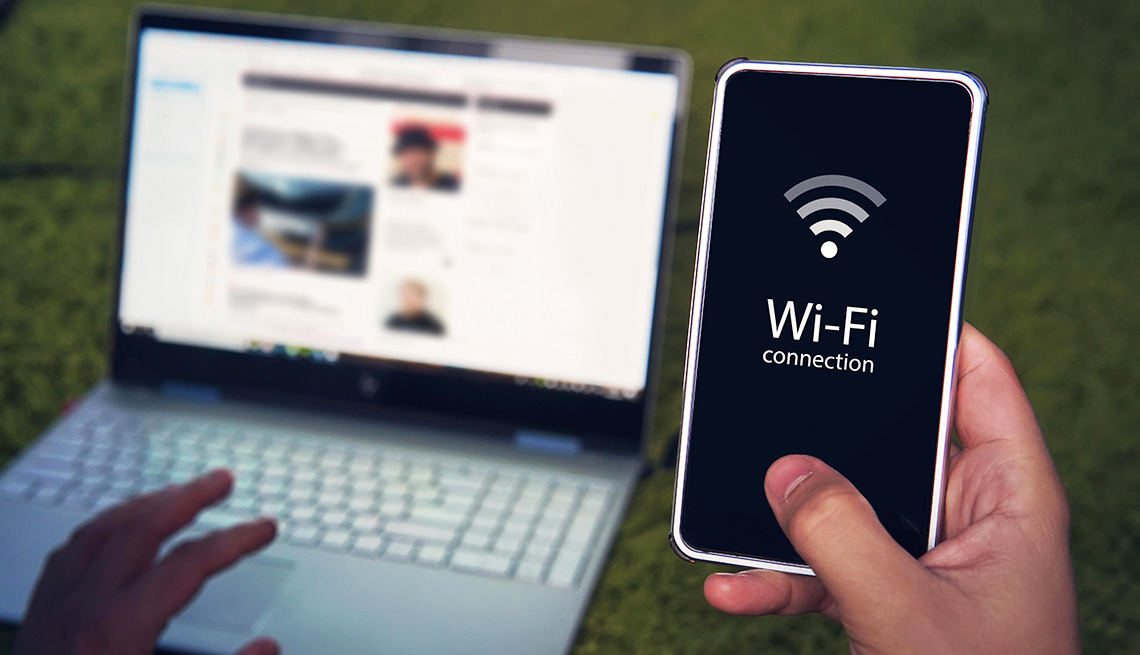
How to Use Your Smartphone as a Wi-Fi Hot Spot
- Select a language for the TTS:
- UK English Female
- UK English Male
- US English Female
- US English Male
- Australian Female
- Australian Male
- Language selected: (auto detect) - EN
Play all audios:
Dmitrii Melnikov / Alamy Stock Photo Facebook Twitter LinkedIn
While free Wi-Fi is available virtually everywhere these days — airports, coffee shops and hotels — you may be unaware that you’re putting your information at greater risk when you use these
public internet connections.
Whether you’re on your laptop, smartphone or tablet, fraudsters can easily access your data when you’re using shared Wi-Fi than they can when you’re on a private network at home. Hackers can
also use an unsecured Wi-Fi connection to distribute malicious software, better known as malware, and computer viruses.
But one of the safest ways to connect to the internet is through something you’re rarely without — your smartphone. By creating a “personal hot spot” on your iPhone or Android, you can allow
Wi-Fi access to another device, such as your laptop or tablet.
Using your 4G or 5G smartphone network is safer than a Wi-Fi network that’s not password protected, says Iskander Sanchez-Rola, director of privacy innovation for Norton.
“Personal hot spots are much more difficult to hack, and attackers typically focus their efforts on exploiting people who are unprotected on public Wi-Fi networks,” he says. “Because public
Wi-Fi networks are inherently less secure than a personal hot spot, you could also be exposing yourself to identity theft.”
How a personal hot spot worksEssentially, you’re using your smartphone’s cellular data to connect to the internet. This means you’ll need a healthy data plan to avoid a nasty surprise on your monthly bill. When in
doubt, ask your mobile phone carrier how many gigabytes of data you’re allowed to use each month.
A personal hot spot is ideal only when you want to use another device to access the internet. If you’re using your smartphone to go online, you don’t need a personal hot spot. You simply use
your data. But for a device like a laptop or tablet without cellular capabilities, a personal hot spot is a safer way to get online than using public Wi-Fi.
How to create a personal hotspot on an iPhone
1. Go to Settings | Cellular | Personal Hotspot. Newer operating systems will also let you go straight from Settings to Personal Hotspot.
2. Tap the slider next to Allow Others to Join. If it’s green, you’re all set.
3. Your Wi-Fi password will show underneath the Allow Others to Join option. If you want to change the password, tap it and create a new one.
4. Now on another device such as a laptop, go to the Wi-Fi section and search for nearby networks. You’ll see the name of your phone, which by default contains your name, like “Marc’s
iPhone.” You can change that in Step 6 if you desire.